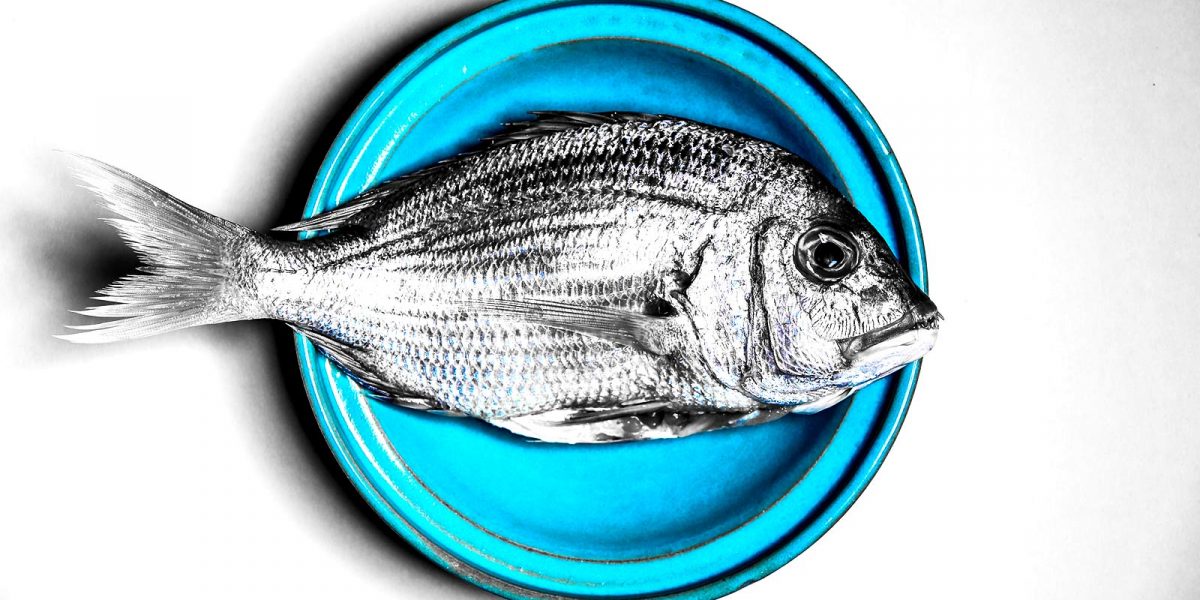POSTED BY SONIA FERNANDEZ-UCSB
A new review of the aquatic foods sector, or “blue” foods, shows how fisheries and aquaculture can play a greater role in delivering nutrition and improving food systems around the world.
Five peer-reviewed papers in the journal Nature highlight the opportunities to leverage the vast diversity of blue foods in the coming decades to address malnutrition, lower the environmental footprint of the food system, and provide livelihoods.
People around the world eat more than 2,500 species or species groups of fish, shellfish, aquatic plants, and algae. Together, these foods provide livelihoods and incomes for more than 100 million and sustenance for one billion.
“People are trying to make more informed choices about the food they eat, in particular the environmental footprint of their food,” says Ben Halpern, a marine ecologist at the University of California, Santa Barbara’s Bren School of Environmental Science & Management, who with colleagues reports findings in three papers on the environmental sustainability of aquatic foods, the potential for the growth of small-scale producers, and the climate risks that face aquatic food systems.
“For the first time we pulled together data from hundreds of studies on a wide range of seafood species to help answer that question. Blue foods stack up really well overall and provide a great option for sustainable food.”
The research projects that global demand for blue foods will roughly double by 2050 and will be met primarily through increased aquaculture production rather than by capture fisheries.
Investing in innovation and improving fisheries management could increase consumption even more and have profound effects on malnutrition. For instance, a “high growth” modeling scenario showed that increasing supply by 15.5 million tons (8%), causing a drop in prices, would reduce cases of nutrient deficiencies by 166 million, especially among low-income populations.
“Small-scale fishers—the individuals and small boats that fish in places all around the world—are a huge part of the global seafood system and are incredibly diverse in who they are and how they fish,” says Halpern, who also directs the National Center for Ecological Analysis & Synthesis at UC Santa Barbara. “That diversity creates both opportunities and challenges for sustainably managing the oceans. We unpacked this diversity to help guide better management.”
BLUE FOOD NUTRITION
The researchers found blue foods to rank more highly than terrestrial animal-source foods in terms of their nutritional benefits and potential for sustainability gains.
Many blue food species are rich in important nutrients. Compared to chicken, trout has approximately 19 times more omega-3 fatty acids; oysters and mussels have 76 times more vitamin B12 and five times more iron; and carps have nine times more calcium.
“For the first time we got to see what more aquatic food production would mean for human health globally,” says Bren School marine ecologist and assistant researcher Christopher Free, who with fellow UC Santa Barbara marine scientist Jacob Eurich coauthored a study that examines the nutritional potential of blue foods.
“What we project is that by making aquatic foods cheaper to the consumer, there’s likely going to be a shift away from land-based foods like chicken, beef, and dairy. I think what made us really excited is knowing that aquatic food could be a useful solution to combating malnutrition, and really showing that comprehensively for the first time.”
The nutritional benefits of blue foods are especially important for women, who were found to benefit more than men from increased consumption in nearly three times the number of countries in the study.
ENVIRONMENTAL FOOTPRINT
On average, the major species produced in aquaculture, such as tilapia, salmon, catfish, and carp, were found to have environmental footprints comparable to chicken, the lowest-impact terrestrial meat. Small pelagic species like sardines and anchovies, bivalves, and seaweeds all already offer lower stressors than chicken.
Further investments to improve the sector’s efficiency and reduce its environmental footprint can have sector-wide benefits, including for less commonly raised species like European bass, weakfish, flatfish, sea breams, and milkfish.
The research found that blue food systems facing the highest risk from climate change are also typically located in those regions where people rely on them most and where they are least equipped to respond and adapt to climate hazards.
“Climate change is creating all sorts of risks to humanity, including to our food,” Halpern says. “Blue foods are no different and in fact face some unique risks from things like acidifying and warming waters. But not all foods are equally vulnerable to these risks—in our work we show where, how, and why different blue foods face different risks from climate change.”
TIME TO ACT
These five papers are the first in a series from the Blue Food Assessment (BFA), a group of researchers led by Stanford University’s Center for Ocean Solutions and Center on Food Security and the Environment, the Stockholm Resilience Centre at Stockholm University, and EAT.
“Few, if any, countries are developing their blue food sector to provide ecological, economic, and health benefits to its full potential,” says Rosamond Naylor, BFA co-chair and founding director of the Center on Food Security and the Environment at Stanford University. “This assessment aims to provide the scientific foundation for decision-makers to evaluate trade-offs and implement solutions that will make blue foods an instrumental part of an improved food system from local to global scales.”
“We are nine fishing seasons away from the deadline for achieving the 2030 Sustainable Development Goals so the urgency is high,” says Jim Leape, co-director of the Stanford Center for Ocean Solutions. “This research can help policymakers, companies, financiers, fishers, and consumers capitalize on the immense potential of blue foods to help achieve those goals.”
Source: UC Santa Barbara

